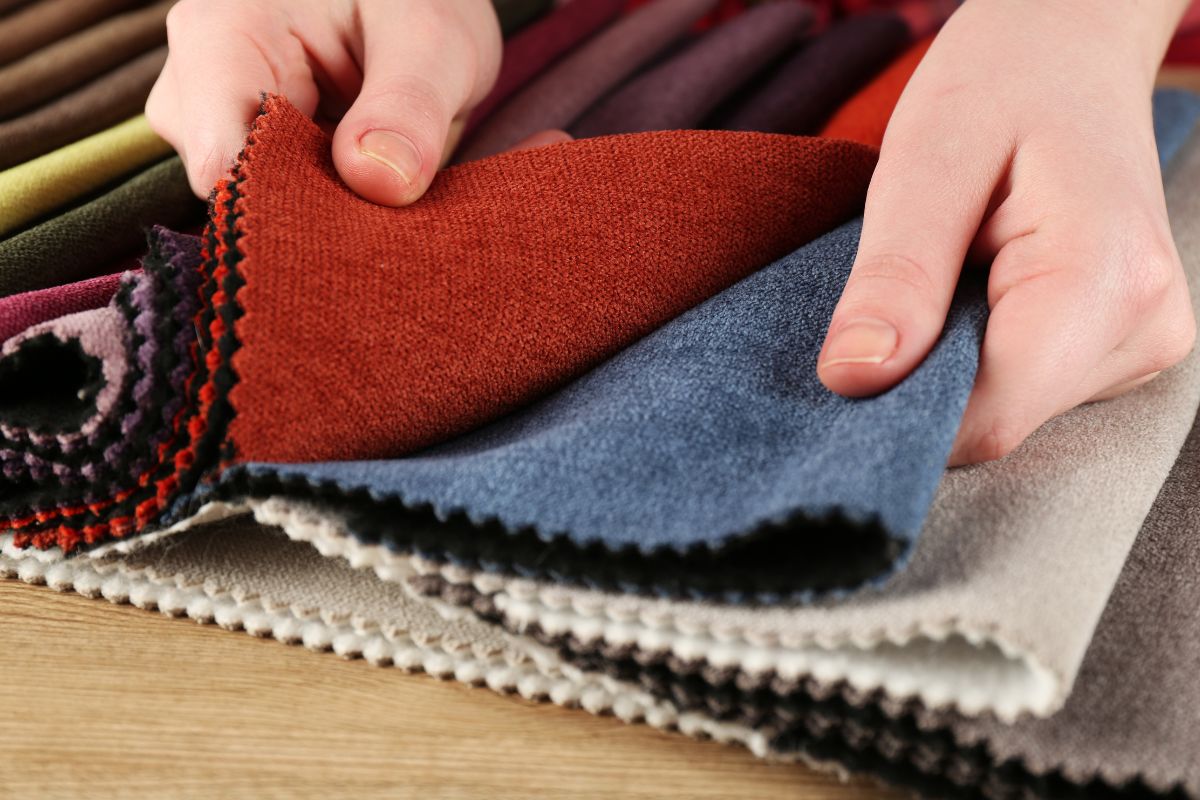Polyester is a synthetic fabric that’s widely used in the clothing industry. When you touch or wear polyester, you’re experiencing a material that is smooth to the touch and often both lightweight and durable. Unlike natural fibers like cotton or wool, polyester doesn’t breathe as well, which can lead to feeling warm and sometimes less comfortable in hot weather. It is known for being a versatile fabric, easily dyeable in vibrant colors, and resistant to shrinking and wrinkles.
The feeling of polyester against your skin can vary depending on the weave and finish of the fabric. High-quality polyester tends to feel soft and may even mimic the texture of natural fibers. On the other hand, low-quality polyester might feel scratchy or stiff. Because it’s a plastic-based fiber, it might remind you of other plastic materials with a slightly slippery feel.
Given its synthetic nature, polyester might not absorb moisture as well as natural fabrics, which could lead to sweating. However, advancements in textile technology have improved polyester’s feel and breathability. Some polyester garments may have moisture-wicking properties, making them more comfortable to wear during physical activity or in warmer climates.
Defining Polyester
Polyester is a synthetic fiber derived primarily from petroleum, a key raw material. Through a chemical process called polymerization, polyester is created by linking together molecules into long chains that form the plastic commonly known as the fiber.
- Composition: Polyester fibers are essentially plastic in nature and are composed of the ester functional group in their main chain.
- Characteristics: Known for its strength, durability, and resistance to shrinking and stretching, polyester also has quick-drying properties.
- Manufacturing Process: The manufacturing of polyester involves a series of chemical reactions, employing chemicals to create a molten polymer solution that can be spun into fibers.
- Uses: Due to its versatile qualities, you’ll find polyester in a myriad of products, including clothing, home furnishings, and even industrial materials.
Given its synthetic origin and the complex chemicals involved in its production, polyester is a testament to modern manufacturing. Its widespread use is largely due to its ability to mimic natural fibers, providing you with a range of clothing options that are often more affordable and require less care than their natural counterparts.
Physical Properties of Polyester
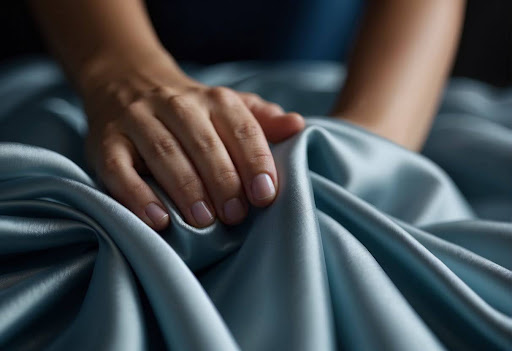
When you choose a polyester garment or fabric, you’re selecting a material known for its strength, durability, and versatility. Below, you will find an exploration of its texture, weight, and resilience, which are central to understanding polyester’s appeal in various applications.
Texture and Touch
Polyester’s texture varies depending on the manufacturing process; however, it typically feels smooth and may also have a silky feel. Advanced weaving techniques can impart a soft texture, making it comfortable for a variety of clothing. Despite its potential smoothness, some polyester fabrics can feel slick, and finishes applied to the fabric can result in a shiny appearance.
Weight and Thickness
Polyester is lightweight and can be woven into both thin and thick fabrics without sacrificing quality. The thinness contributes to its lightweight nature, making it a popular choice for active wear and other garments where ease of movement is important. Yet, the material’s strength means even lighter polyester fabrics maintain shape retention.
Durability and Resilience
One of the key selling points of polyester is its durability. You will find this material exceptionally durable and resistant to many chemicals. It exhibits excellent wrinkle resistance, meaning your polyester clothing will retain its shape and unlined texture over time. In addition, it has a strong shape retention and strength, which contribute to its longevity, making polyester an economical and practical choice for everyday wear and use.
Comparing Polyester to Natural Fibers
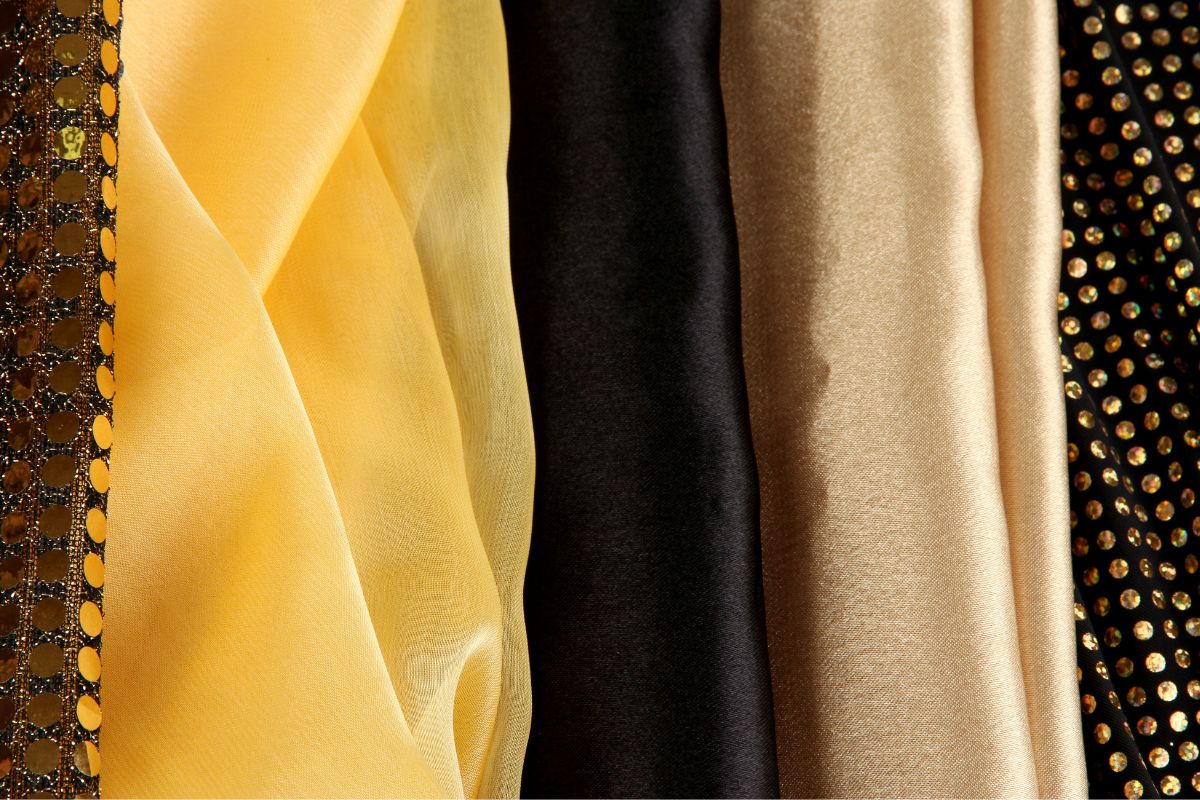
When you choose between polyester and natural fibers like cotton, linen, silk, and wool, you’re considering factors such as comfort, breathability, and moisture-wicking properties. Each material has distinct qualities that contribute to its feel and function.
Against Cotton and Linen
Cotton: You will find that cotton, one of the most popular natural fibers, is valued for its softness and breathability. It efficiently absorbs moisture, making it cool and comfortable for everyday wear and during warm seasons.
Linen: Linen is another natural fabric that stands out for its exceptional coolness and freshness in hot weather. It is known for its natural crumpled texture and highly breathable characteristics, though it doesn’t wick moisture as effectively as cotton.
Comparing these natural fabrics to polyester, polyester is not as breathable but is more moisture-wicking, which means it draws sweat away from your body and dries quickly. However, it might not offer the same level of comfort due to its synthetic nature, potentially making it feel less comfortable directly against your skin, especially in high temperatures.
Comparing to Silk and Wool
Silk: The luxurious feel of silk is hard to match. It is smooth and has a natural sheen, draping comfortably against your skin. Silk also maintains moderate breathability but may not be as moisture-wicking as other fabrics.
Wool: Wool’s natural crimped texture creates tiny insulating pockets, making it warm and very comfortable. Wool has the ability to absorb a significant amount of moisture without feeling wet, offering superior moisture-wicking properties.
Compared to silk and wool, polyester has a different tactile experience – it is generally smooth and may mimic the drape of silk but doesn’t offer the same temperature regulation or quality. When weighing quality and comfort, natural fibers such as silk and wool tend to be preferred for their unparalleled comfort and breathability, but polyester can be a practical alternative for less demanding situations, providing durability and ease of care.
Performance and Functionality

Polyester fabrics are engineered for their specific applications, which makes them versatile in terms of performance and functionality. Factors like moisture management, breathability, and care requirements are key aspects that determine the utility and user experience of polyester materials.
Moisture Management
Polyester’s moisture management properties are notable: it has a moisture-wicking ability that draws sweat away from your skin to the surface of the fabric, where it quick-drying characteristics allow the moisture to evaporate rapidly. This keeps you dry and comfortable during activities.
Breathability and Thermal Properties
Polyester fabrics come in varying grades of breathability:
- Less breathable versions are often used for insulation or in hot weather gear, as they can trap warmth effectively.
- More breathable polyester is engineered to permit airflow, which helps regulate body temperature and provide a cool feeling.
Care and Maintenance
The care and maintenance of polyester are straightforward. Polyester is known for being easy to care for because it is:
- Wrinkle-resistant: Less prone to wrinkling, reducing the need for ironing.
- Durable: Resistant to fading and maintains its shape well over time.
Care instructions typically recommend washing in warm water and tumbling dry on a low setting. It’s also resilient against most chemicals, which allows for a variety of cleaning agents to be used without damaging the fabric.
Application of Polyester in Textile Products

When you think of polyester, envision a fabric that has been a cornerstone in the textile industry due to its strength, durability, and elasticity. Within textile products, polyester is famed for its ability to adapt to various uses, from everyday clothing to the couch you sit on.
Clothing and Activewear
Polyester is a go-to fabric for your wardrobe, particularly in clothing and activewear. Its versatility shines in garments ranging from t-shirts to fashion dresses. For example, fleece jackets made of polyester are not only warm but also lightweight and easy to care for. Polyester’s ability to wick moisture makes it an ideal choice for athletic wear, helping you stay dry during intense workouts. Furthermore, the introduction of microfiber polyester has revolutionized activewear, with fabrics that are now smoother and more comfortable than ever.
Upholstery and Home Furnishings
Your home decor benefits greatly from polyester’s diverse applications. It’s common to find polyester used in upholstery due to its resistance to wrinkling and shrinking. Sofa covers, curtains, and cushions often count on polyester’s strength and easy maintenance to keep home interiors looking pristine. In home furnishings, polyester blends can mimic the look and feel of more expensive materials, allowing you to enjoy luxury aesthetics at a more affordable price point. Whether you are reupholstering a vintage chair or choosing new curtains, polyester offers a practical and stylish solution.
Varieties and Blends
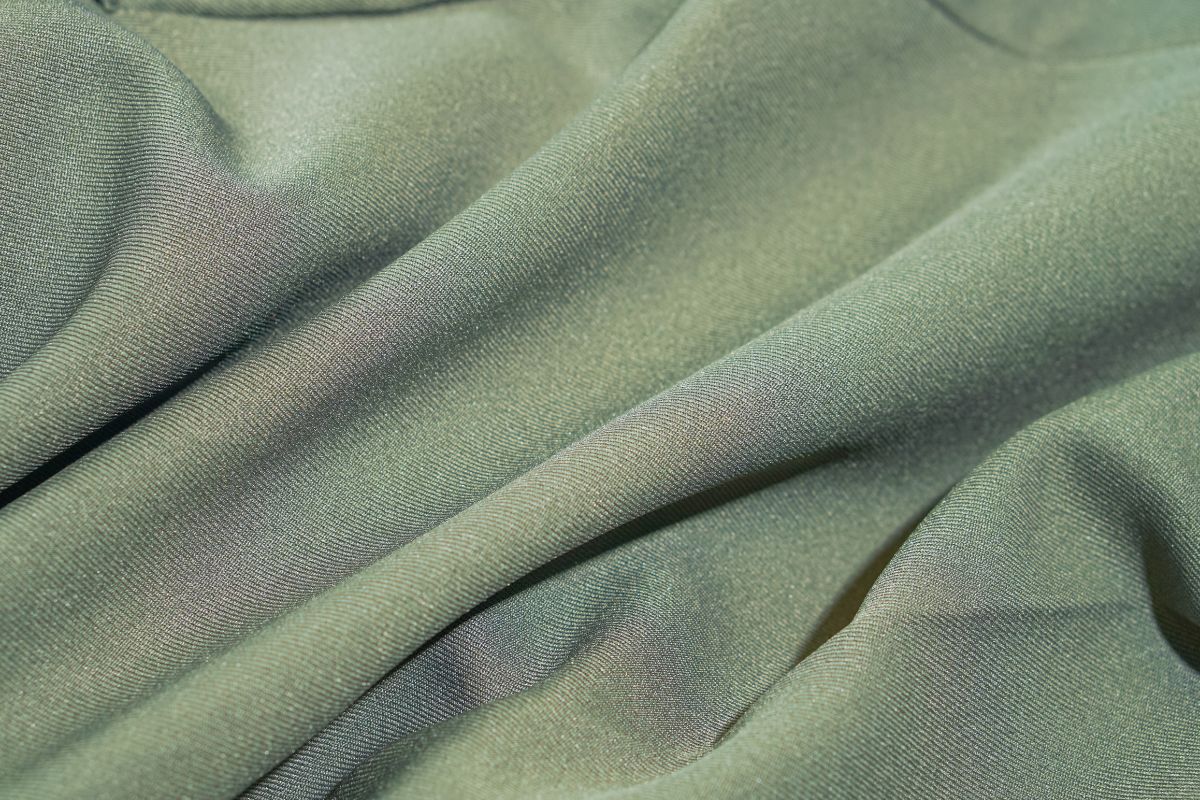
As you explore the world of polyester, you’ll find that it varies greatly in texture and application, largely due to the different ways it can be processed and blended with other materials. Knits and wovens create distinctly different textiles, and when mixed with other fibers, the resulting fabric can have enhanced properties suitable for a multitude of uses.
Knit vs. Woven Polyester
Knit polyester is soft, stretchable, and has a tendency to be more breathable, making it an ideal choice for athletic wear. This flexibility is due to the looped structure of the knit, which can include microfiber polyester for a silkier touch or spandex to enhance elasticity.
In contrast, woven polyester is more rigid and durable, preferred in applications where structure is key, such as in heavy-duty bags or upholstery. This type of polyester can also be blended with cotton to provide a balance of strength and comfort, or with nylon to improve the fabric’s abrasion resistance and longevity.
Blending with Other Materials
Blends aim to combine the best qualities of each component material. For instance, a typical blend could be 65% polyester and 35% cotton, bringing together polyester’s durability with cotton’s natural comfort.
- 100% polyester: It is resilient and resistant to most chemicals and shrinking.
- Microfiber polyester: It is exceptionally soft and often used for cleaning cloths and linens.
- Recycled polyester: Offers a more environmentally conscious option with a similar feel to virgin polyester.
When blended, materials like nylon and spandex add toughness and stretch, respectively, expanding polyester’s suitability across a broad range of products. Whether for stretchy sportswear or durable outdoor gear, these blends enhance fabric characteristics, meeting specific demands for performance and feel.
Aesthetic and Design Characteristics
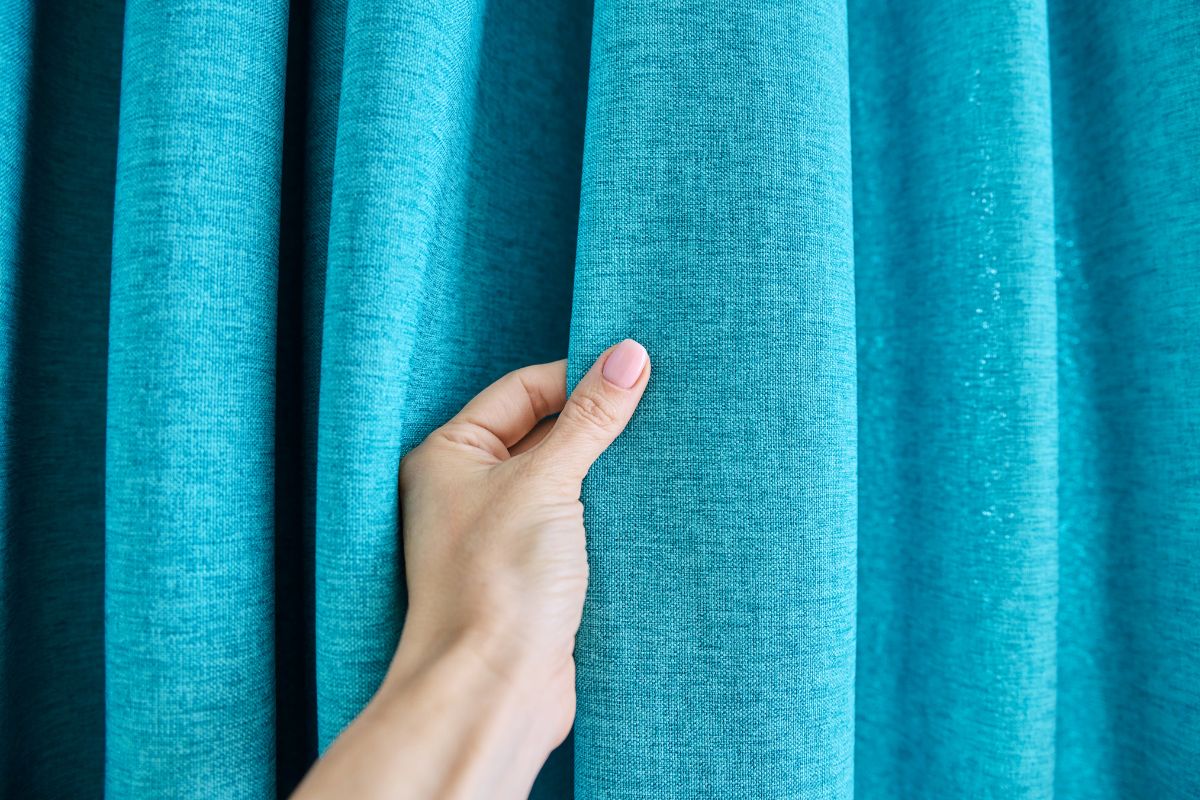
Polyester possesses unique qualities that influence its aesthetic and design characteristics. Its appearance can vary from silky and shiny to slick and flowing, determining the elegance and functionality of the end product.
Drape and Flow
Polyester fabric is notable for its ability to drape well. When you handle a garment made of polyester, you will perceive its flowing quality, which allows it to conform gracefully to body contours. The fabric’s weight and weave have a direct impact on its drape—lighter polyester fabrics, for example, will have a more fluid and ethereal flow compared to heavier weaves.
Texture and Shine
Polyester’s texture can range from a silky feel to a slightly coarse sensation, depending on the methods used in its production. A common characteristic you might notice is its propensity for a shiny finish, which can give a lustrous sheen to garments and textiles, enhancing their appeal. However, not all polyester is shiny; some variants are designed to mimic the matte appearance of natural fibers.
Environmental and Health Considerations

When discussing polyester, it’s crucial for you to understand its relationship with the environment and potential effects on health. Polyester is a synthetic material derived from petroleum, and its production and disposal raise several environmental and health concerns.
Impact on the Environment
Synthetic Material: Polyester is a type of synthetic material made from chemicals predominantly sourced from petroleum. As a non-renewable resource, petroleum extraction is environmentally intensive, contributing to significant ecological footprints during the fabric’s production phase.
Environmental Impact: Widespread use of polyester has raised numerous environmental concerns. Polyester is not inherently eco-friendly due to its non-biodegradable nature, often persisting in landfills for decades. Furthermore, washing polyester clothing can release microfibers into water systems, which are difficult to extract and can have a detrimental effect on marine life and ecosystems.
Recycling Efforts: Efforts to mitigate the negative environmental impact of polyester include recycling used garments to create new fibers, which can help reduce the reliance on virgin petroleum sources. Additionally, innovations in the development of biodegradable polyesters, such as those involving terephthalate, are on the rise, aiming to lessen the environmental footprint.
Considerations for Sensitive Skin
Chemical Usage: During the manufacturing of polyester, a variety of chemicals are used, which can sometimes remain in the fabric. This can lead to skin irritation, especially in those with sensitive skin or allergies.
Itching and Discomfort: Polyester may cause discomfort through itching for sensitive individuals, and because it is hydrophobic and retains oils, it can exacerbate skin irritation through prolonged contact with the body and by trapping sweat and bacteria against the skin. Choosing higher-quality polyester fabrics or those treated for sensitive skin can sometimes mitigate these effects.
By being aware of the environmental impacts and potential skin sensitivities associated with polyester, you can make more informed decisions regarding your textile choices.
Understanding Fabric Care
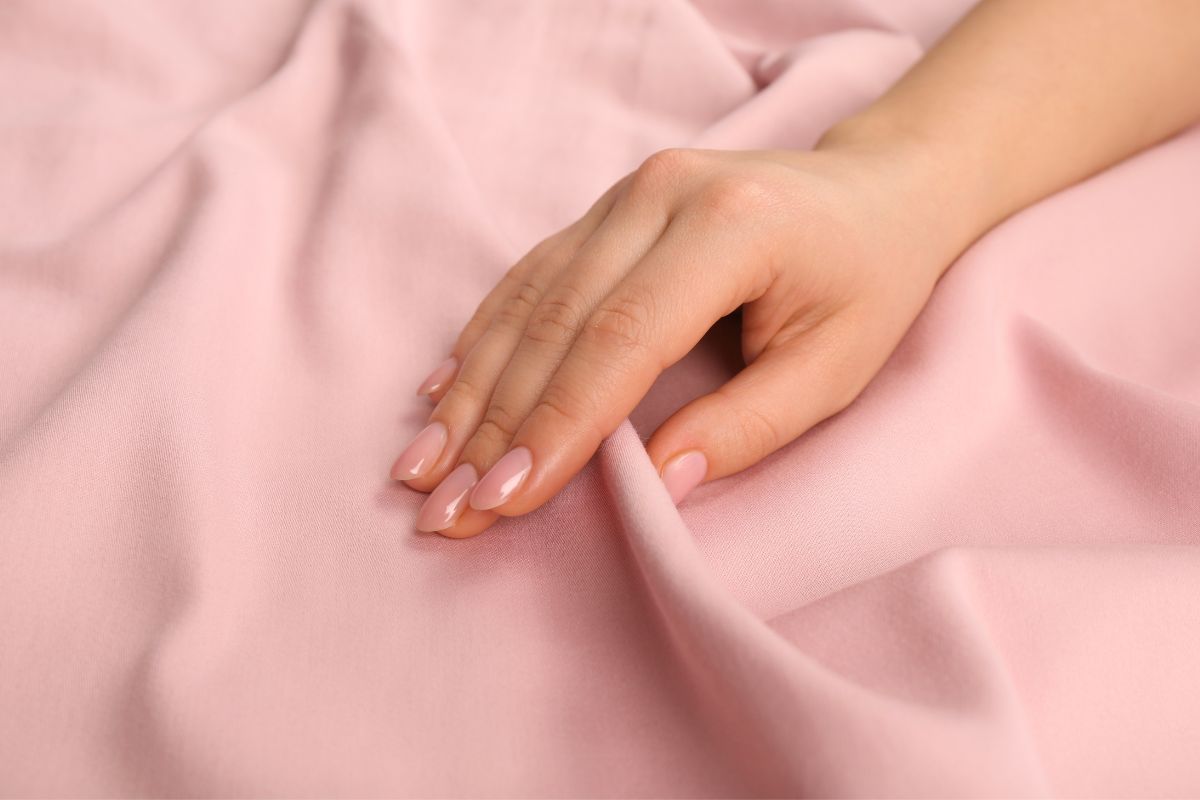
Proper fabric care extends the life and appearance of your polyester garments. By following the right washing and drying recommendations, your polyester clothes can remain in excellent condition for years.
Washing and Drying Recommendations
- Care Instructions: Always check the label on your polyester clothing before washing. Most polyester is machine washable, but it’s crucial to use the right settings. Opt for a gentle cycle with warm water and a mild detergent.
- Easy to Care For: Polyester’s synthetic fibers make it resistant to shrinking and wrinkling. It’s a low-maintenance fabric that doesn’t require special treatment, but avoiding bleach and fabric softeners will preserve its quality and feel.
- Quick-Drying: One of the advantages of polyester is that it dries quickly. To dry your polyester fabrics, you can either lay them flat or hang them up to air dry. If you’re in a hurry, using a tumble dryer on a low heat setting is also an option; however, air drying is gentler on the fabric and uses less energy.
Remember, your polyester garments will serve you well when you give them the right care. Keep these tips in mind to ensure that your clothing remains vibrant and durable.
Frequently Asked Questions
In this section, you’ll find specific answers to some common questions about polyester’s characteristics in various applications.
How is polyester typically used in fabrics and textiles?
Polyester is widely utilized in clothing due to its durability, wrinkle resistance, and ability to retain dye colors well. It’s often blended with other fibers to create fabrics that are versatile and easy to care for.
Can you distinguish polyester from cotton by touch?
Yes, you can often distinguish polyester from cotton by touch. Polyester tends to have a smoother, silkier feel, while cotton is more breathable and natural to the touch.
Is polyester material considered soft or rough?
Polyester material can vary, but it is generally considered to be soft, especially when woven into a fine thread count or brushed finish. Some forms can be less soft and may feel rougher, dependent on the textile’s manufacturing process.
How does wearing polyester compare to wearing natural fibers?
Wearing polyester compared to natural fibers like cotton or wool can feel different. Polyester is less breathable than natural fibers and can feel warmer when worn, which might not be ideal for hot climates or intensive physical activity.
What are the tactile characteristics of polyester on furniture upholstery?
On furniture upholstery, polyester is praised for its durability and resistance to fading and staining. The tactile experience can be pleasant as it often incorporates a textured weave or a soft finish, providing comfort and practicality.
What properties define the feel of polyester clothing against the skin?
Polyester clothing against the skin is known for its smooth and lightweight feel. While it may not absorb moisture as natural fibers do, innovations in textile manufacturing have led to more breathable versions that can feel comfortable during extended wear.

